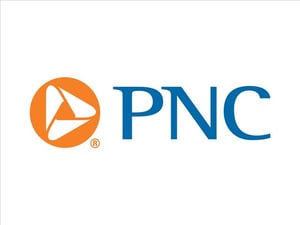 Kurt Rankin, VP, and Economist for the PNC Financial Services group gives a sales outlook for the 2020 holiday season.
Kurt Rankin, VP, and Economist for the PNC Financial Services group gives a sales outlook for the 2020 holiday season.
Interview Summary:
• PNC expects an overall increase in holiday sales of 6% in 2020 from 2019. All of the growth will come from online sales, which PNC expects to surge by 27%. In-store holiday sales are expected to fall by 6%. The Viral Recession has accelerated consumers’ shift toward online spending and away from brick-and-mortar retailers.
• The pandemic has also shifted consumer purchases away from services and toward goods. Fundamentals for holiday sales are mixed. Unemployment is high, but the stimulus has boosted household incomes.
• With low inflation, most of the increase will come from higher sales volumes.
Watch the full interview now!
Detailed Comments
 · As with everything else in the U.S. economy, the pandemic has scrambled the outlook for holiday spending. With record daily levels of coronavirus cases and states and municipalities imposing new restrictions to contain the spread of the virus, conditions are changing rapidly. But even with the pandemic raging, PNC expects holiday sales in 2020 to be up about 6% from 2019. With low inflation, almost all of the increase will come from higher unit sales and not higher prices. This would be the strongest holiday sales growth since 2017.
· As with everything else in the U.S. economy, the pandemic has scrambled the outlook for holiday spending. With record daily levels of coronavirus cases and states and municipalities imposing new restrictions to contain the spread of the virus, conditions are changing rapidly. But even with the pandemic raging, PNC expects holiday sales in 2020 to be up about 6% from 2019. With low inflation, almost all of the increase will come from higher unit sales and not higher prices. This would be the strongest holiday sales growth since 2017.
· Although sales growth will be strong, all of the gains will come from higher non-store sales, primarily online sales. Online retailers have been taking market share from traditional brick-and-mortar retailers for years, but that process accelerated as the pandemic took hold and consumers became reluctant to venture out (see Chart 1). With virus cases surging in many parts of the country in the fall, online sales will continue to see gains of better than 20% year-over-year, while in-store sales will continue to decline. (A few definitional points: non-store sales include more than just general merchandise; for example, they include online food purchases, and so the increase in online sales is more than just holiday sales. For traditional retailers with online operations, goods that customers order online but pick up at the store are counted as in-store sales, while goods that are delivered to customers count as non-store sales. And gift card sales are counted when the recipient uses the card to purchase goods or services, not when the card is sold; this pushes some holiday sales into the new year.) PNC expects online sales to be up 27% in the fourth quarter of 2020 compared to the same period last year, while in-store sales of general merchandise are expected to drop 6%.
· It may appear a bit incongruous that holiday sales would increase 6% when the unemployment rate is elevated and coronavirus cases are at record highs and rising. But with the pandemic consumers have shifted their consumption toward goods and away from services (see Chart 2). With people less willing to be in crowds, spending on services like travel, entertainment, and dining out has fallen. At the same time, people are spending more on at-home goods such as food, building materials, electronics, and entertainment supplies. That trend is boosting online holiday purchases.
· And while high unemployment is a negative for holiday spending–the unemployment rate was 6.9% in October, up from 3.5% in February, although down from 14.7% in April—other economic factors are more positive. With stimulus efforts, including one-time checks for many households and bonus unemployment insurance benefits, households actually have more after-tax income now than they did before the pandemic, even with enormous job losses. High-income earners, who account for the bulk of holiday sales, have experienced disproportionately fewer job losses. And household wealth is rising, especially for high-income households, thanks to gains in stock prices and home values.
· With stimulus income and an inability to spend the personal saving rate hit a record high in the second quarter and remained well above its long-term average in the third quarter, giving consumers a cushion to purchase holiday gifts. Debt burdens are also low, as consumers repaired their balance sheets in the aftermath of the Great Recession a decade or so ago, and have further paid down their debts with stimulus proceeds. Low-interest rates and ready access to credit are also positives for consumer spending.
· Most of the increase in holiday spending will come from higher sales volumes and not higher prices for goods. Of the 6% increase in holiday sales, PNC expects 5 percentage points of that to come from stronger sales, and only 1 percentage point from higher prices. With the U.S. and global economies still much smaller now than they were before the pandemic, there is a great deal of excess capacity that is making it difficult for firms to raise prices. Input costs, especially for energy, are lower now than they were in 2019, containing inflation; the high unemployment rate is also restraining labor costs. And competition from online retailers will continue to restrain price growth. Price increases for some holiday goods will be larger, however, especially for those with stronger demand and/or that have been subject to supply chain disruptions.
· Risks to the outlook for holiday sales are largely to the downside; growth could be weaker than anticipated. Foremost is the continued spread of the pandemic. Consumer confidence is already fragile and could plunge as COVID-19 cases and deaths rise. There is also the increasing possibility that states impose more restrictions on retailers, which would further depress the outlook for brick-and-mortar sales. There are already preliminary indications that credit card spending is turning down in November as caseloads rise.
· Fading stimulus could also be a drag on holiday sales. Most households received their one-time payments in the spring, and many have spent down those funds. Extended unemployment insurance benefits tied to the pandemic are set to expire at the end of the year and Congress has been unable to agree on a new stimulus package. Millions of households have unemployed workers; they could turn more cautious in their spending without a stimulus deal. There are some upside risks, however. Foremost is recent good news on vaccine development, which could boost consumer confidence and spending. Vaccine news has also pushed up stock prices, which could provide an extra lift to spending by wealthier households.
· Finally, consumer psychology is much more of a wildcard than usual this year. Gift buyers may decide to splurge after a year of deprivation or to make up for an inability to travel and see family in-person. On the other hand, they may be much more concerned about the future and less willing to spend.













